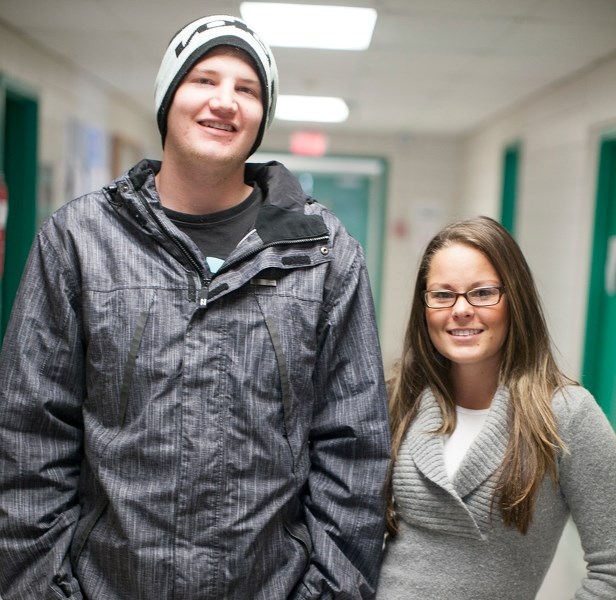Land agent students from Olds College got some practical experience recently, attending a public participation session on the South Saskatchewan Regional Plan (SSRP).
The session on Nov. 28 in Red Deer was designed to give the public the opportunity to provide feedback on one of seven land use plans that are currently being drawn up by the provincial government. A total of 42 students from the land use planning and land agent program at the college attended the event.
“It was actually really instrumental because we learned all about that last year in our first year, how the plans were made and how they were incorporating the public interest into making the plans, and then we actually got to go there and be a part of it as everybody was doing roundtable discussions. It was really educational I think and definitely served a practical purpose which Olds College always tries to do,” said Jenna Cupples, a second-year land agent student at the college, who attended the session in Red Deer.
Cupples said it was good to be able to give feedback on various parts of the plan that students felt should be changed or implemented or what may be missing in their view.
Wesley Longacre, another second-year land agent student that attended the session, also said it was a good experience.
“It really put into perspective where our province is going in the future and how these plans are going to be implemented and it shows how anyone can have a say in shaping the future of our province. It was really helpful just to know where we're going in the future,” he said.
Longacre said the session was a good preview of what students will be dealing with once they graduate and get jobs in the field. He said municipalities will have a lot more impact on various aspects of land use planning in the future, and students like him will be working more with municipalities on those aspects going forward.
“I thought it was really great. Anyone could have input and (session organizers) made you feel like you were contributing,” he said.
Rudolph Liebenberg, an instructor in the land and water program at Olds College, said the session in Red Deer was an excellent opportunity for the students to take part and give feedback to government officials who will be drafting the plan. Various topics that the students have been learning about such as land use planning, how waterways might impact land use and land reclamation are being incorporated into the plan.
“The students had a chance to comment on those various sections. The big emphasis was on public participation,” Liebenberg said.
One of the other benefits of the session for the students was to meet with industry representatives.
“There's also the chance to meet people from the industry and get exposure. (Most) of these students will be looking for jobs in April, May, June and just maybe build up a few contacts,” Liebenberg said.
The best part of the event, he added, was for the students to gain some practical experience, something the college is always looking to promote. Learning to work with people who have differing opinions is also good for the students to see as well, since after students get jobs in the land use field they will have to bring about compromise on particular issues, Liebenberg said.
“I think for a practical exercise like this, all three of those elements (reaching consensus, negotiating and understanding the scope of a project) actually come to the fore and you as a student are actually exposed to them to various degrees,” he said.
According to the college's website, students in the land agent program “learn how to work with landowners to arrive at mutually beneficial solutions to the acquisition of land for well sites, pipeline routes, highways and utility right of ways and alternate sites.”
The SSRP was initiated in the summer of 2009 as one of seven land-use planning initiatives throughout the province, according to government spokesman Neil Watson. The regional plans are designed to put in place an orderly planning structure and balance competing uses such as recreation, biodiversity, protecting the province's water supply and development.
The SSRP is the second of the regional plans to reach the draft stage. The Lower Athabasca Regional Plan was adopted in August 2012. There is still an opportunity for people to comment on the draft SSRP until Jan. 15, 2014 by going to www.landusealberta.ca. The government hopes to adopt the SSRP by sometime in the spring of 2014.



